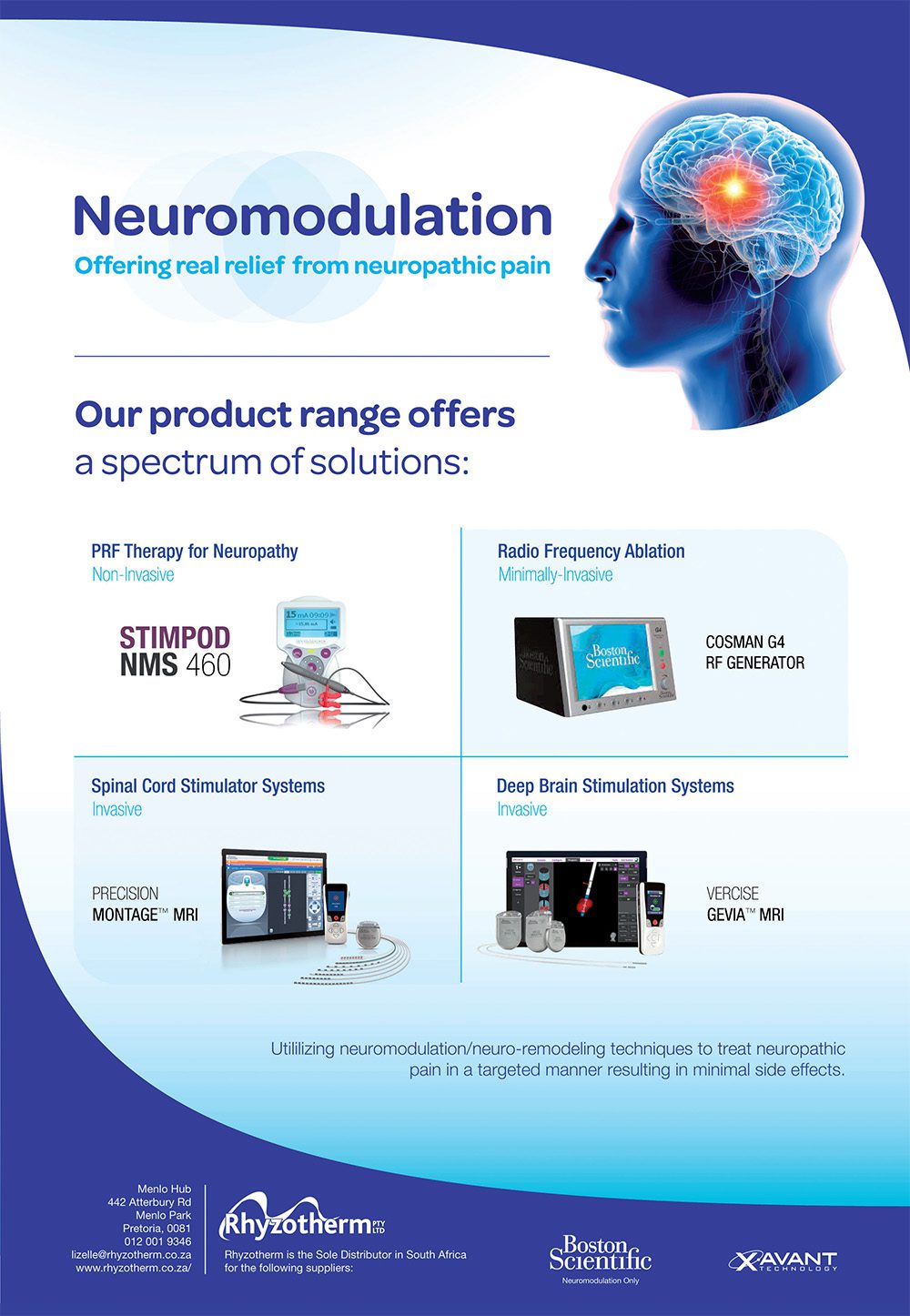Pain Relief is Possible
Despite many medical advances, many people still suffer chronic and recurring pain. Often being told there is nothing else that can be done, that they have to live with it. That is why Rhyzotherm is dedicated to offering Neuromodulation pain management therapies with lasting results and are cost effective to the patient.
Neuromodulation is an expanding area of pain medicine that incorporates an array of non-invasive, minimally invasive and surgical electrical therapies. It is typically offered to patients only after they have tried conventional treatment options such as medications, physical and occupational therapy or surgery.
A remote control allows the patient to turn stimulation on and off, increase and decrease the level of stimulation and target different pain areas in the body using settings or programs designed specifically for that patient.
Deep brain stimulation (DBS)
DBS involves implanting electrodes within certain areas of the brain. These electrodes produce electrical impulses that regulate abnormal impulses. It is an established treatment for people with movement
disorders, such as essential tremor, Parkinson’s disease and dystonia and psychiatric conditions, such as obsessive-compulsive disorder. It is also approved for use by the US Food and Drug Administration to reduce seizures in difficult to treat epilepsy.
The amount of stimulation in deep brain stimulation is controlled by a pacemaker-like device placed under the skin in the upper chest area. A wire that travels under the skin connects this device to the electrodes in the brain.
Rhyzotherm’s answer for neuropathic pain
They offer alternative treatments for neuropathic pain, including radio frequency ablation (RFA) and spinal cord stimulation (SCS). Neuropathic pain is caused by damage or injury to the nerves that transfer information between the brain and spinal cord from the skin, muscles and other parts of the body. They also offer deep brain stimulation treatment, which is an elective surgical procedure in which electrodes are implanted into certain brain areas. These electrodes, or leads, generate electrical impulses that control abnormal brain activity.
Radiofrequency ablation (RFA)
RFA, also called radiofrequency neurotomy, uses radio waves to create a current that heats a small area of nerve tissue. The heat destroys that area of the nerve, stopping it from sending pain signals to the brain. It is most commonly used for pain in the back, neck, buttocks (sacroiliac joint) and facial pain caused by trigeminal neuralgia. It is also helpful for long-term shoulder, knee or hip joint pain. RFA may be right for a patient if they have pain relief following a nerve block injection. This tells the provider that, that particular nerve is the source of pain and is an appropriate target for RFA.
RFA is a safe, proven means of interrupting pain signals, such as those coming from an irritated facet joint in the spine. Radio frequency current is used to heat up a small volume of nerve tissue, thereby interrupting pain signals from that specific area. Clinical data shows that RF treatment can effectively provide lasting pain relief. The target nerve is the medial branch of the posterior ramus that supplies the facet joint in question.
Spinal cord stimulation (SCS)
Spinal cord stimulation therapy works by interrupting pain signals before they reach the brain. This can help with pain relief – even when other therapies have failed. A small device, similar to a pacemaker called a Stimulator with thin wires called leads, implanted into the body deliver mild electrical pulses to specific nerves on the spinal cord. SCS is done either with percutaneous or surgical technique with various programming algorithms with the benefit of Multiple Independent Current Control (MICC), utilising a rechargeable implantable generator lasting up to 12 years due to zero-volt technology.

